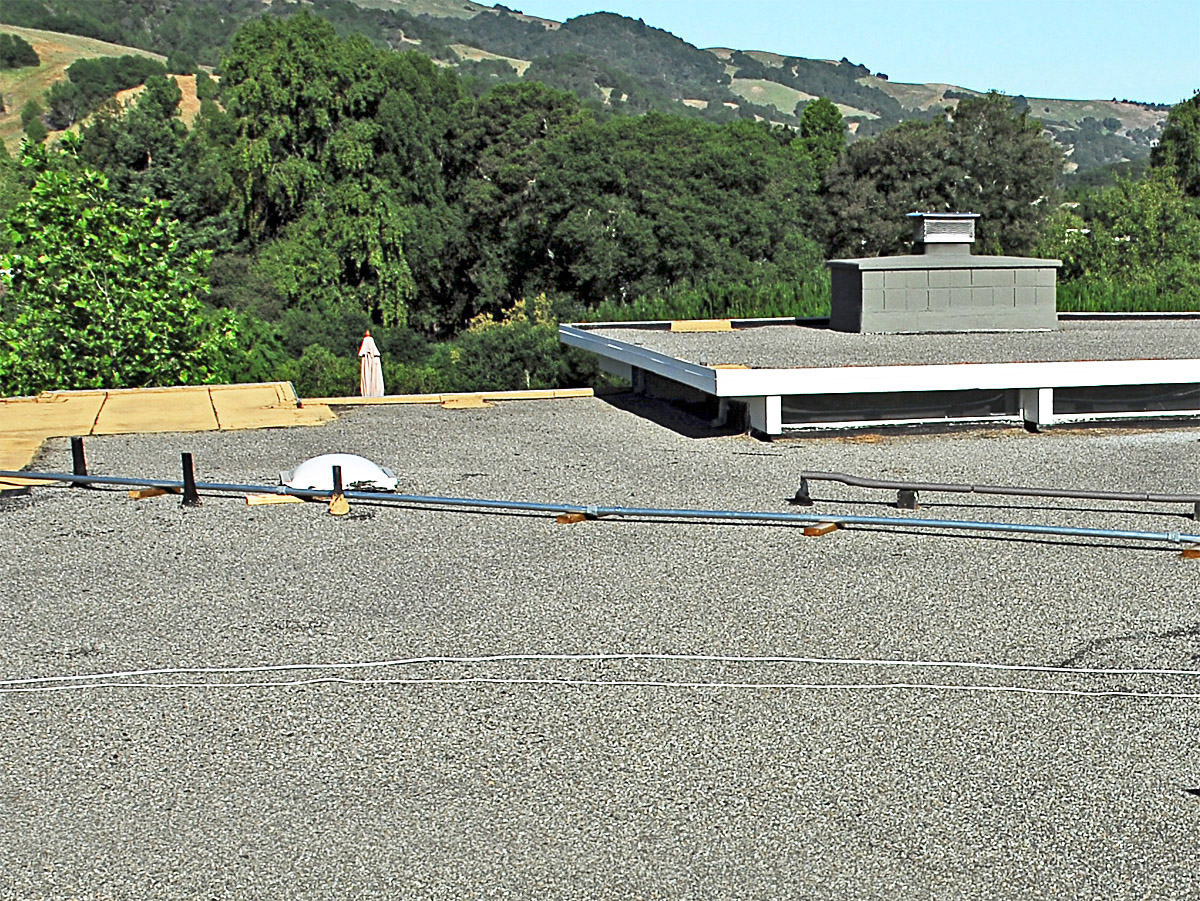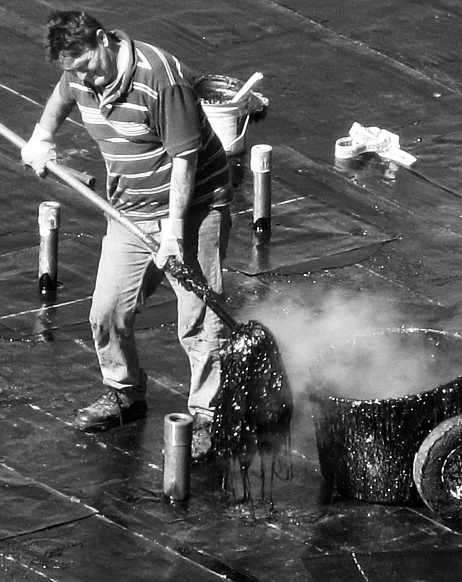Can 'Old School' Be 'Cool'?
 |
|
Even with the high-efficiency, cutting-edge alternative systems readily available today, some folks still prefer the old-school option. But why? |
 |
|
|
 |
|
|
Pondering the aesthetics and practicalities of reroofing an Eichler, one sometimes confronts the eternal existential dilemma: Can 'old school' be 'Cool,' even if it involves hot tar?
In this case, old-school roofing translates to tar-and-gravel for most Eichlers, except the shake-roofed gable models. Cool applies to those highly reflective, energy efficient roofing systems recommended today by Title 24, the California building standards code.
"There's a whole physics and chemistry behind Cool Roofs," Payam Bozorgchami explained patiently. The senior civil engineer to the California Energy Commission conceded that the project he manages may be Cool, but "it is not mandatory."
Considerable explanation was needed after perusing the state's 518-page, 24-megabyte Residential Compliance Manual for 2016. We consulted with Bozorgchami and Eichler home-improvement experts to determine whether tar-and-gravel roofs still have a place in the 21st century world of energy conservation and progressive products.
"I don't really recommend tar-and-gravel," San Francisco architect John Klopf of Klopf Architecture, who specializes in designs for Eichler remodeling, told us pointedly in an email. He elaborated that when a client wanted such a roof, he had to research 1930s construction manuals to come up with a useful specification for the contractor. "It's an outdated technology...so regardless of the aesthetics, I don't ever recommend them."
"Tar-and-gravel looks really pretty, but it's not efficient," allowed preservation-minded realtor Monique Lombardelli of Palo Alto-based Modern Homes Realty. She noted that it can be more prone to ponding, but nonetheless admitted, "I think it looks great [though]."
True. It's a harmonious presentation, with considerable curb appeal, that graced most original flat-roofed and low-sloped homes in the mid-century, not just Eichlers. But that was before newer alternatives, such as polyurethane spray foam and single-ply systems, came along. There is value, however, in the authenticity of that old-school look.
"I think aesthetically, a lot of buyers want authenticity," says Lombardelli, who specializes in marketing Eichlers and other mid-century modern homes. "The more authentic they look, the more beautiful they are."
For the purposes of regulating home energy efficiency, California is divided by its Energy Commission into 16 climate zones. The other primary factor in determining state requirements for a roof is its slope, which is not an issue for flat-roofed Eichlers.
"They're usually less than nine degrees of slope. That would fall under our low-slope category," said Bozorgchami. "You usually don't see an Eichler that's steep."




